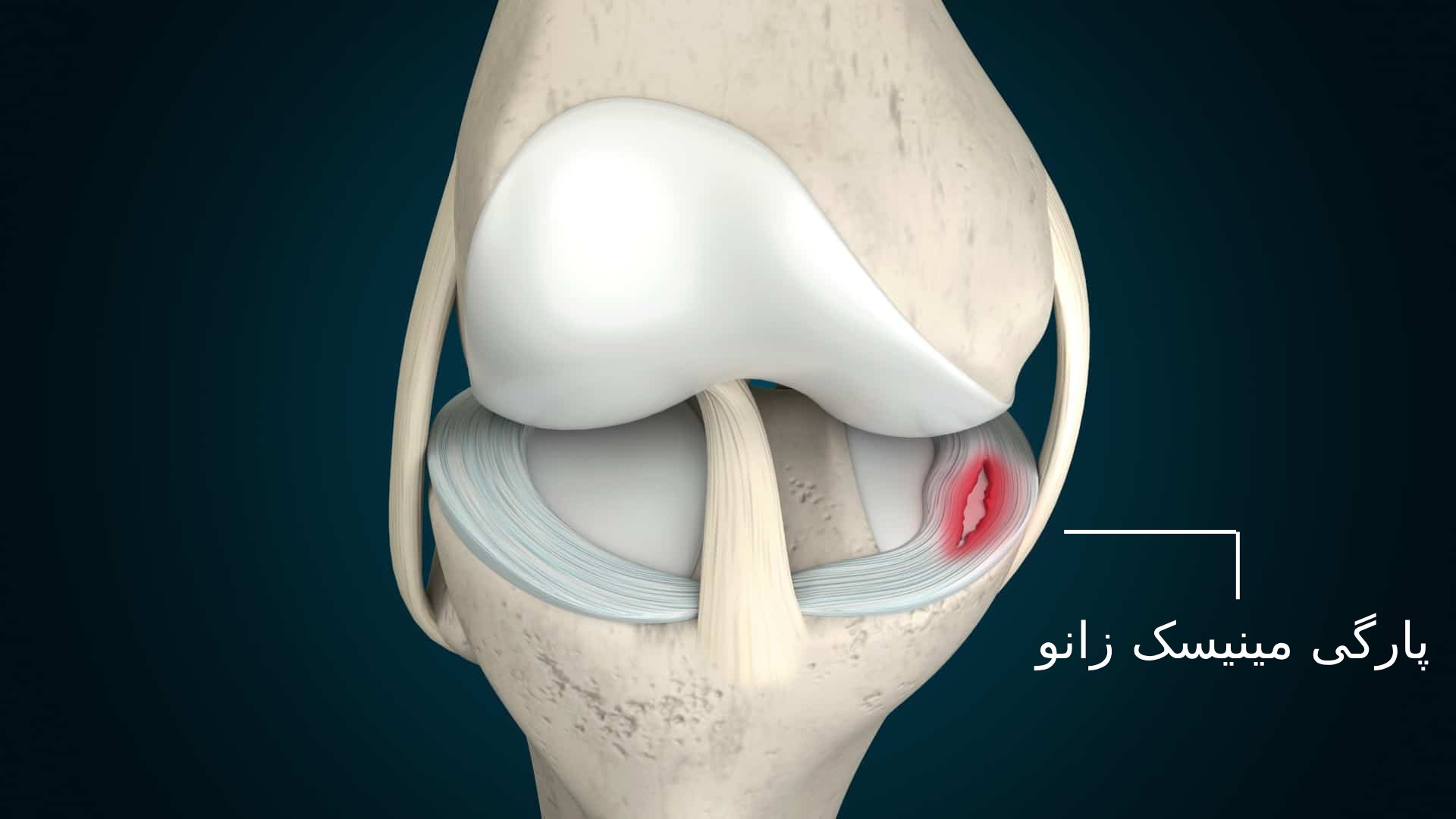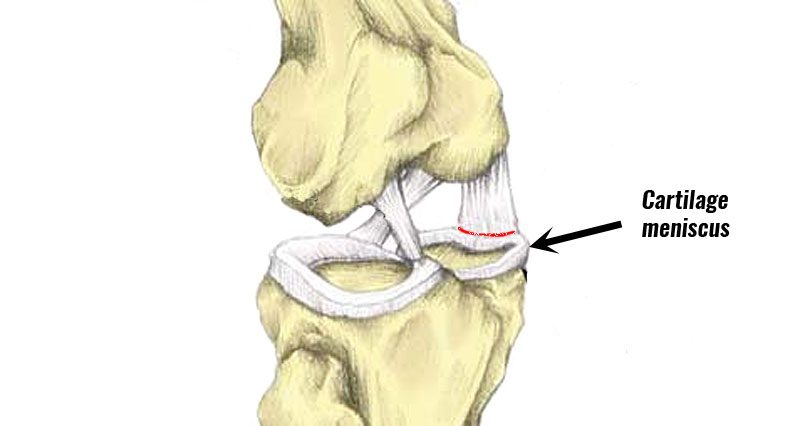Anatomy and Function of the Meniscus

The meniscus is a C-shaped piece of cartilage that acts as a shock absorber and helps to stabilize the knee joint. It sits between the femur (thighbone) and the tibia (shinbone), providing a smooth surface for the bones to move over each other.
Structure and Location of the Meniscus
The meniscus is made of tough, fibrous cartilage that is similar to the cartilage found in the ears and nose. It is not as hard as bone, but it is much stronger than the cartilage found in other joints. There are two menisci in each knee: a medial meniscus on the inner side of the knee and a lateral meniscus on the outer side of the knee.
Role of the Meniscus in Knee Function
The meniscus plays a vital role in the proper functioning of the knee joint. It performs the following functions:
- Load Distribution: The meniscus helps to distribute weight evenly across the knee joint, reducing the stress on the cartilage and bones.
- Shock Absorption: The meniscus acts as a shock absorber, cushioning the knee joint from impact forces during activities like walking, running, and jumping.
- Joint Stability: The meniscus helps to stabilize the knee joint by providing a snug fit between the femur and tibia, preventing excessive movement.
Types of Meniscus Tears
A meniscus tear occurs when the cartilage is torn. This can happen due to a sudden injury, such as a twisting motion or a direct blow to the knee. It can also occur gradually over time due to wear and tear.
The location and severity of a meniscus tear determine the type of tear. Some common types of meniscus tears include:
- Longitudinal Tear: A longitudinal tear runs along the length of the meniscus, like a vertical cut.
- Transverse Tear: A transverse tear runs across the width of the meniscus, like a horizontal cut.
- Radial Tear: A radial tear is a tear that spreads from the inner edge of the meniscus towards the outer edge.
- Flap Tear: A flap tear is a tear where a piece of the meniscus is torn off and becomes loose in the joint.
Causes and Risk Factors for Meniscus Tears

Meniscus tears are common injuries that can affect individuals of all ages and activity levels. These tears occur when the meniscus, a C-shaped piece of cartilage in the knee, is torn. Understanding the causes and risk factors for meniscus tears is crucial for prevention and proper treatment.
Common Causes of Meniscus Tears
Meniscus tears are commonly caused by sudden twisting or rotating movements of the knee, particularly when the foot is planted firmly on the ground. This type of injury often occurs during sports activities, especially those involving pivoting or sudden changes in direction.
- Sports Injuries: Sports that place a high stress on the knees, such as football, basketball, soccer, and skiing, are common culprits. These activities involve frequent pivoting, jumping, and sudden changes in direction, which can put excessive strain on the meniscus. For example, a basketball player landing awkwardly after a jump shot or a soccer player twisting their knee while trying to make a tackle can both experience meniscus tears.
- Degenerative Changes: As we age, the meniscus can become thinner and weaker, making it more susceptible to tears. This is due to the natural wear and tear that occurs over time. Degenerative changes can also occur due to repetitive stress or overuse of the knee joint. A common example is a runner who experiences gradual weakening of the meniscus due to years of high-impact running.
- Trauma: A direct blow to the knee, such as a fall or a car accident, can also cause a meniscus tear. These injuries can be severe, resulting in significant damage to the meniscus and surrounding structures. For instance, a pedestrian hit by a car can suffer a severe meniscus tear due to the impact force.
Risk Factors for Meniscus Tears
Several factors can increase the risk of developing a meniscus tear.
- Age: The risk of meniscus tears increases with age due to the natural degenerative changes that occur in the cartilage. As we age, the meniscus becomes thinner and less resilient, making it more susceptible to tears.
- Activity Level: Individuals who participate in high-impact activities or sports that involve frequent pivoting, jumping, and twisting movements are at an increased risk of meniscus tears. For instance, athletes in sports like basketball, soccer, and football are more prone to these injuries.
- Underlying Conditions: Certain underlying conditions, such as osteoarthritis or obesity, can increase the risk of meniscus tears. Osteoarthritis weakens the cartilage, making it more susceptible to damage. Obesity puts additional stress on the knee joints, increasing the risk of meniscus tears.
Impact of Specific Sports and Activities
The type of sport or activity an individual engages in can significantly influence their risk of meniscus injury.
- Contact Sports: Contact sports, such as football, rugby, and hockey, involve high levels of physical contact, increasing the risk of meniscus tears due to direct blows to the knee or sudden twisting movements.
- Pivoting Sports: Sports that require frequent pivoting and twisting, such as basketball, soccer, and tennis, can also put stress on the meniscus, increasing the risk of tears.
- High-Impact Activities: Activities that involve repetitive jumping or landing with high impact, such as running, jumping, and weightlifting, can contribute to meniscus wear and tear, increasing the risk of tears.
Symptoms and Diagnosis of Meniscus Tears

A meniscus tear can cause a variety of symptoms, depending on the severity of the tear and the location of the injury. Some people may experience only mild discomfort, while others may have significant pain and difficulty walking.
Symptoms of Meniscus Tears
The symptoms of a meniscus tear can vary depending on the severity of the tear. Common symptoms include:
- Pain: Pain is the most common symptom of a meniscus tear. It is often felt in the knee joint and may be worse when bending, twisting, or straightening the knee.
- Swelling: Swelling around the knee joint is another common symptom of a meniscus tear. It may develop immediately after the injury or gradually over time.
- Clicking or popping: A clicking or popping sensation in the knee joint may occur when the torn meniscus moves or catches.
- Locking: The knee may lock in a bent position, making it difficult to straighten. This happens when a piece of the torn meniscus gets trapped in the joint.
- Instability: The knee may feel unstable or give way, especially when walking or running. This is due to the weakened support provided by the torn meniscus.
Diagnostic Procedures for Meniscus Tears
Diagnosing a meniscus tear typically involves a combination of physical examination and imaging studies.
Physical Examination
A physical examination is the first step in diagnosing a meniscus tear. The doctor will ask about your symptoms and medical history, and they will perform a physical exam to assess the range of motion, stability, and tenderness of your knee. They may also perform specific tests to evaluate the meniscus, such as:
- McMurray’s test: This test involves rotating the knee while extending and flexing it. A clicking or popping sensation during this maneuver can suggest a meniscus tear.
- Apley’s compression test: This test involves applying pressure to the knee while rotating it. Pain or a clicking sensation can indicate a meniscus tear.
Imaging Studies
Imaging studies are often used to confirm the diagnosis of a meniscus tear. The most common imaging tests used for meniscus tears include:
- Magnetic Resonance Imaging (MRI): MRI is a highly sensitive imaging test that provides detailed images of the knee joint. It can accurately detect meniscus tears and other injuries in the knee.
- X-ray: While x-rays are not as effective as MRI in detecting meniscus tears, they can help rule out other conditions, such as fractures.
Comparison of Diagnostic Methods
MRI is the gold standard for diagnosing meniscus tears. It provides detailed images of the knee joint and can accurately detect tears, even small ones. However, MRI is more expensive than x-rays and is not always readily available.
X-rays are a less expensive and more readily available option. However, they are not as effective as MRI in detecting meniscus tears. They can help rule out other conditions, such as fractures, but they may not show a meniscus tear, especially if it is small or located in a difficult-to-see area.
Physical examination can be helpful in identifying a meniscus tear, but it is not always conclusive. The doctor may use a combination of physical examination and imaging studies to confirm the diagnosis.
A meniscus tear can be a debilitating injury, especially for athletes. Imagine the agony of a Vikings fan watching their team lose a crucial game, only to discover they’ve also suffered a meniscus tear themselves! While the pain of a torn meniscus can feel like a loss on the field, proper treatment and rehabilitation can help you get back to enjoying your favorite team, whether it’s the Minnesota Vikings or any other.
Remember, recovery is a journey, and with the right support, you’ll be back on your feet cheering on your team in no time.
A meniscus tear can be a real pain, literally! It’s a common injury, especially for athletes, and can seriously impact your ability to move freely. But don’t despair, torn meniscus recovery is possible, and with the right treatment and rehabilitation plan, you can get back on your feet and back to doing the things you love.
Understanding the severity of the tear is crucial for choosing the best course of action, whether it’s physical therapy, surgery, or a combination of both.
